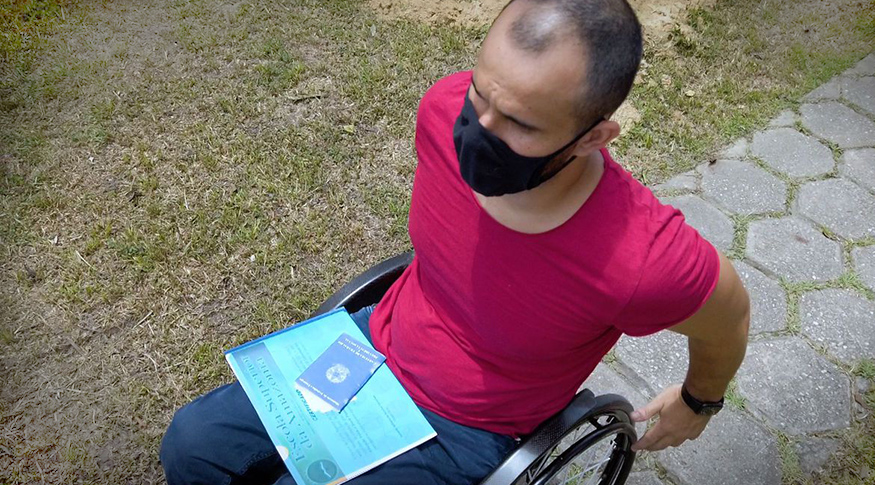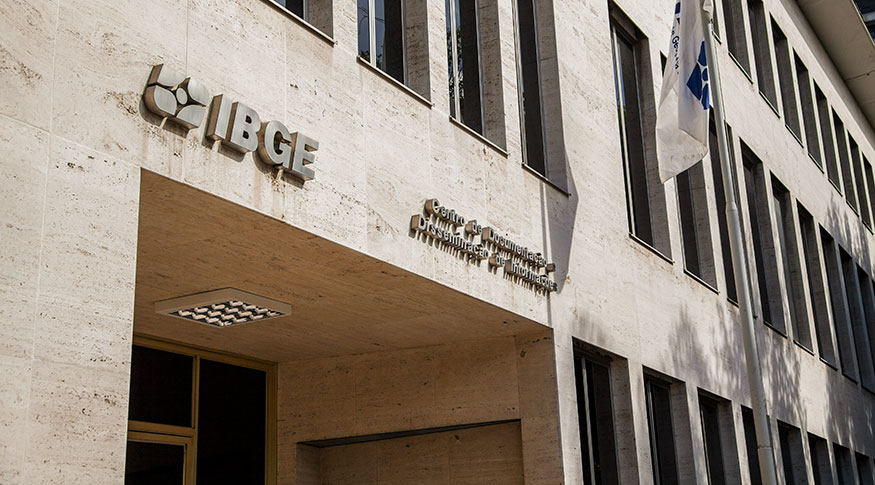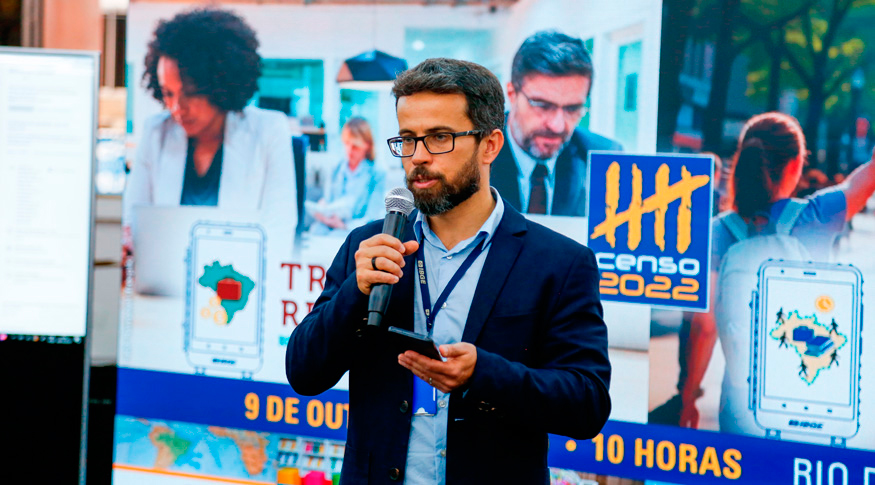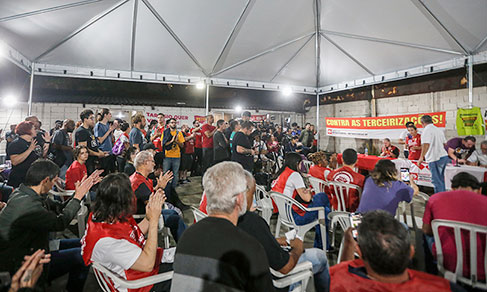Social Inequalities
Unemployment and informality are higher among persons with disabilities
September 21, 2022 10h00 AM | Last Updated: September 23, 2022 07h23 PM
Highlights
- In 2019, 8.4% of the persons aged 2 years or older had at least one disability and were present in 19.8% of households in Brazil.
- In 2019, the participation rate of persons with disabilities in the labor market (that is, either employed or unemployed) was 28.3%, less than half of this percentage for persons without disabilities (66.3%).
- Only 34.3% of workers with disabilities held formal jobs, while among persons without disabilities the rate was 50.9%.
- Persons with disabilities had an average monthly income from work of R$1,639, while those employed without disabilities received, on average, R$2,619 per month.
- In 2020, in the elections for councilor, only 0.44% of the candidates were persons with disabilities. Among elected councilors, the proportion of persons with disabilities was slightly higher: 0.90%.
- In 2019, 18.2% of the persons with disabilities were below the poverty line (with an income of less than US$ 5.5 per day per person). Among visually impaired persons, 22.5% were below the poverty line.
- Only 58.2% of the persons with disabilities had simultaneous access to the three basic sanitation services (sewage through a sewage system, rainwater or cesspool connected to the network, water through the general network and garbage collection). Among those without disabilities, this percentage was 62.4%.
- In Brazil, 55.0% of schools in the early years of primary education were adapted for students with disabilities. In schools in the final years of primary education, the proportion was 63.8% and for high school, 67.4%. In Santa Catarina, 96.1% of high schools were adapted, against 33.0% in São Paulo.

Persons with disabilities are less present in the labor market than those without disabilities. In 2019, the participation rate for persons with disabilities (28.3%) was less than half that among persons without disabilities (66.3%). This indicator measures the proportion of employed and unemployed persons aged 14 years and over. The data are from the publication "Persons with disabilities and social inequalities in Brazil", released today (Sept 21) by the IBGE. The main source of the study is the National Survey of Health (PNS) 2019, published in August of last year.
“The participation rate is the indicator that measures the engagement in the labor market, i.e., if the person was looking for a job or was employed. This rate is lower for persons without disabilities in all age groups and the biggest difference lies within persons aged 30 or 49”, highlights Leonardo Athias, IBGE analyst. Persons with disabilities in that age group had a participation rate of 52.6%, whereas that of persons without disabilities, was 84.5%, a difference of 31.0 percentage points (pp).
The unemployment rate was higher for persons with disabilities (10.3%) than for persons without disabilities (9.0%). This indicator was 25.9% among person with disability aged 14 to 29 and of 18.1% for persons without disabilities in that same age group. For the elderly with disabilities, unemployment was of 5.1% over 2.6% for the elderly without disabilities.
“In addition to the participation rate of persons with disabilities being smaller than that of persons without disabilities, they have a bigger unemployment rate, which indicates a greater difficulty getting a job. That can be due to the lack of accessibility from home to work, at work or to capacitism, which is the type of prejudice against persons with disabilities”, says Mr. Athias.
The analyses by sex and color or race point to other disparities. The unemployment rate was 12.6% among white women with disabilities and 8.3% among those without disabilities. This indicator was higher (13.4%) for brown or black women with or without disabilities.
Only 34.3% of workers with disabilities have a formal contract
The formalization rate indicates the form of insertion in the labor market, that is, whether workers are in formal or informal occupations. While more than half (50.9%) of employed persons without disabilities were employed in formal positions, this indicator was 34.3% among those with disabilities. Persons with more than one disability had an even lower percentage: 27.3%.
“Entering the job market is difficult for them, and when they succeed, the position is proportionately more informal, of worse quality and with fewer rights. There are also differences between the types of disability. In the case of persons with mental disabilities, entering the job market is even more difficult”, emphasizes the researcher.
In 2019, persons with disabilities received, on average, R$1,639 monthly as income from work. This represents about two-thirds of the income of persons without disabilities, who received an average of R$2,619 per month that year. The difference remains when all economic activities are observed. At the same time, there is an impact on the general average income, as there are proportionately more people with disabilities in domestic services, in agriculture and in lodging and food activities, sectors with lower average incomes.
“The lower compensation of persons with disabilities appears in all groups of activities, but there is also the effect of being more concentrated in activities with lower income. This diversity of situations shows the need for adapted policies”, analyzes Mr. Athias.
In the case of agriculture, which had 14.4% of the employed persons with disabilities, the average income from all jobs in this population group was R$1,057, while that of persons without disabilities was R$1,504. In trade, which concentrated 17.1% of persons with disabilities, the disparity was greater: they received, on average, around 60% of the amount paid to workers without disabilities.
Another aspect addressed by the study is the labor market for persons aged 15 to 59 living in households where there were children or elderly persons with disabilities. This indicator was higher for women in households with children with disabilities (16.1%) and in households with elderly persons with disabilities (14.3%) than for all women (11.6%).
“The difference is much greater when there is a child or an elderly person with a disability in the household, as caretaking usually is done by women. This is an important matter when it comes to creating policies to help maintain or insert persons in the job market, if that is their wish”, emphasizes the analyst.
Participation of persons with disabilities as elected representatives is very low
In the 2020 City Council elections, the proportion of candidates with disabilities was only 0.44% of the total number of candidates (518,000). The percentage of persons with disabilities elected was slightly higher: 0.90%.
Despite the very low participation of this segment, which represents 8.4% of persons aged 2 years and over in the country, the difference between the percentages of candidates and those elected indicates that candidates with disabilities were relatively competitive, once the big enrollment barriers are overcome.
According to the Superior Electoral Court (TSE), a body that classifies persons with disabilities differently from the IBGE's National Health Survey (PNS), 253 councilors with physical disabilities were elected in 2020, and none with autism.
About a quarter of the elderly had some kind of disability in 2019
The 2019 edition of the PNS identified that 8.4% of the country's population aged two years or older had some type of disability. The highest proportion was observed in the Northeast (9.9%), and the lowest, in the Central-West (7.1%). Among the Federation Units, the highest concentrations of persons with disabilities were in Sergipe (12.3%) and Paraíba (10.7%), while the lowest were in the Federal District (5.2%), followed by Mato Grosso. (5.6%).
The survey also found that disability is concentrated in the older population: 24.8% of persons aged 60 and over had a disability, while among the persons aged between two and 59 this percentage dropped to 5.1%.
58.1% of the persons with disabilities who received rehabilitation did so in the public health system - SUS
About 21.9% of persons with disabilities received some rehabilitation care. For more than half of them (58.1%), the treatment was covered by the Unified Health System (SUS), while for 41.9%, by private health plan or another modality. Among the types of disability, SUS coverage was higher in cases of mental disability (65.3%) and physical disability in terms of the use of upper limbs (55.6%).
Welfare assistance was used by 62.1% of the persons with disabilities and the study shows that there are also sociodemographic inequalities in this type of service. Women (67.5%) had more access to this type of assistance than men (53.5%). White persons also had more access (70.0% against 56.2% of blacks and browns).
18.2% of people with disabilities were below the poverty line
The survey also investigated the issue of poverty. The proportions of persons below two lines were investigated: the global extreme poverty line (US$1.9 per day per person) and the global poverty line (US$5.5 per day per person). These lines represented, respectively, about R$151 and R$437 per month. “The line of US$ 5.5 a day is recommended by the World Bank for countries with the level of development of Brazil”, explains Mr. Athias.
The 2019 PNS revealed that 5.1% of persons with disabilities were below the extreme poverty line and 18.2% below the poverty line. Among the types of disability, persons with visual impairments had the lowest numbers. About 6.4% of them were in extreme poverty and 22.5% in poverty.
Among residents of households with an income of less than half the minimum wage per capita, 51.2% of persons with disabilities received some social benefit in 2019. Access was higher in the Northeast (61.4%) and lower in the Southeast (39.0 %). The proportion was also higher among households with children aged between two and 14 years (66.2%). Black or brown men and women with disabilities received social benefits in greater proportions (53.9% and 53.5%, respectively) compared to white persons with disabilities.
Access to sanitation and to the Internet is lower among persons with disabilities
Basic sanitation and Internet at home were also addressed in the study. Only 58.2% of persons with disabilities had simultaneous access to sewage services through a collection network, rainwater or cesspool connected to the general network, water through the general network and garbage collection (either direct or indirect). Among those without disabilities, this percentage was 62.4%. Persons with visual impairments also had the lowest proportions of simultaneous access to these three services (46.7%).
About 68.8% of the persons with disabilities had Internet at home, while for persons without disabilities this proportion is 86.1%.
55.0% of schools offering early stages of primary education were adapted for students with disabilities
Data from the Census of Basic Education, from INEP, indicate that just over half (55.0%) of schools in the early years of primary education had infrastructure adapted for students with disabilities in 2019. For schools in the final years of primary education, the proportion was 63.8% and for high school students, 67.4%. In Santa Catarina, 96.1% of high schools were adapted, against 33.0% in São Paulo.
One of the indicators of the Sustainable Development Goals (SDGs) is the high school completion rate of persons aged 20 to 22. The study pointed out a difference between persons with and without disabilities: 48.3% of persons aged 20 to 22 with disabilities completed high school, while for persons without disabilities, the proportion was 71.0%
The worst rates were found for black or brown men with disabilities (34.0%). In households considered below the poverty line of US$ 5.5 per day per person, only 20.6% of men and 42.4% of women with disabilities in this age group had completed high school. In the North and Northeast regions, 31.5% and 35.5%, respectively, of youngsters aged 20 to 22 completed high school, while in the Southeast, the rate was 63.6%.




















